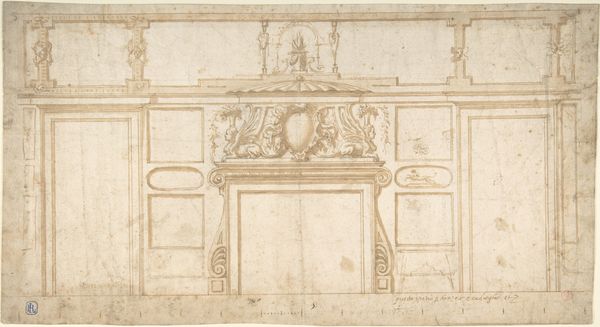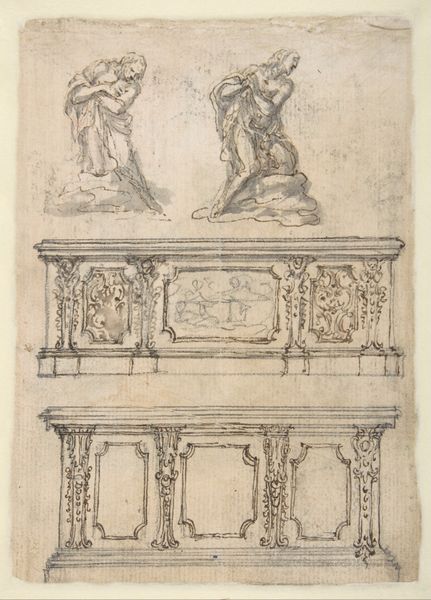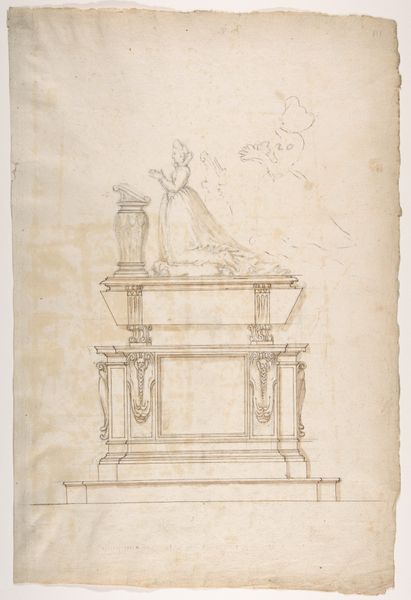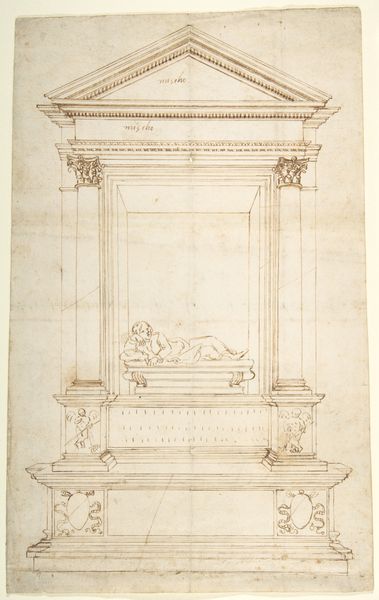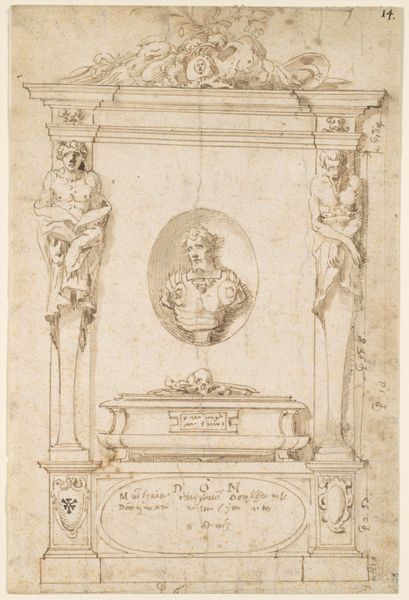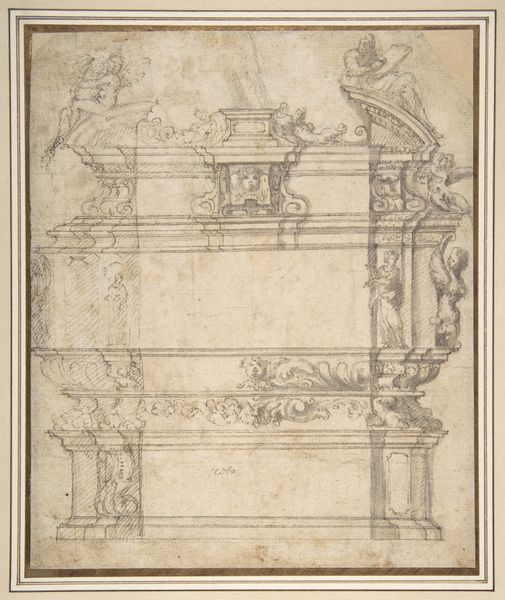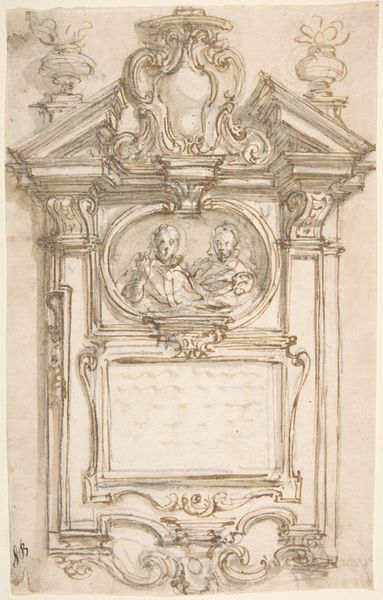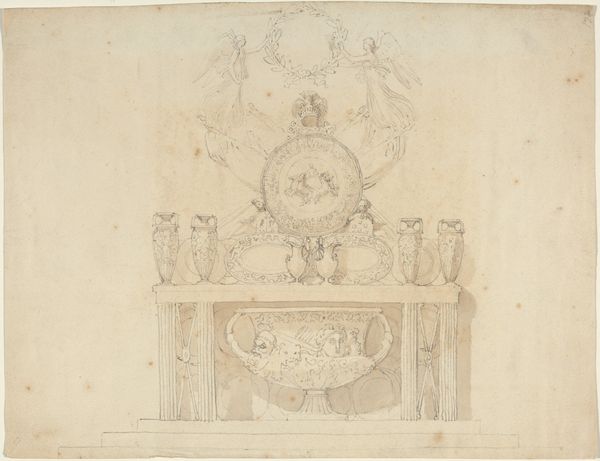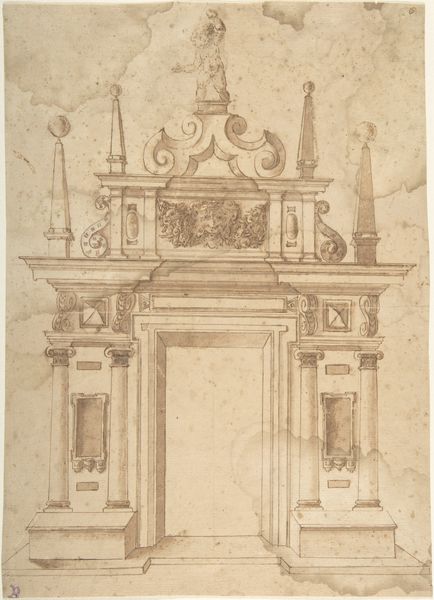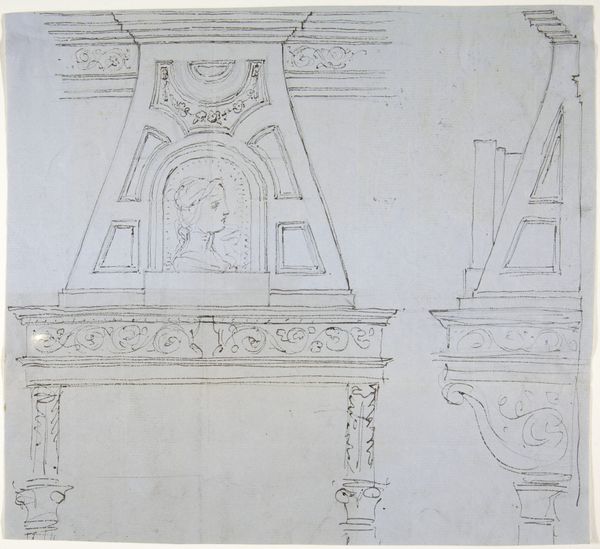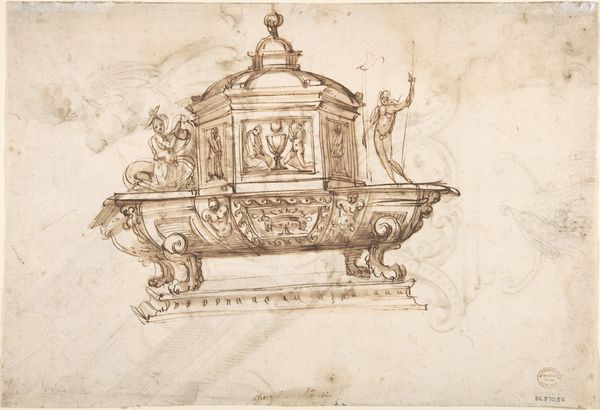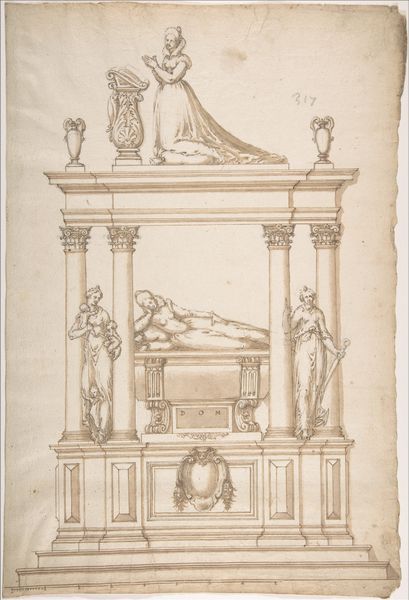
Tomb Monument with Crucifix and Coat of Arms 17th century
0:00
0:00
drawing, carving, print, paper, pencil
#
portrait
#
drawing
#
carving
#
baroque
# print
#
figuration
#
paper
#
11_renaissance
#
pencil
#
line
#
history-painting
Dimensions: sheet: 7 3/8 x 7 5/16 in. (18.8 x 18.5 cm)
Copyright: Public Domain
Curator: What immediately strikes me about this drawing, “Tomb Monument with Crucifix and Coat of Arms” from the 17th century, is how delicate the lines are. It's an anonymous work, held here at the Met. What are your first impressions? Editor: Well, given the funerary subject matter, I'm surprised by its overall lightness. The red chalk, almost sanguine, lends it a surprising warmth, a gentle touch despite the solemn theme. Curator: Absolutely. The visual language is laden with symbolic weight. Consider the coat of arms at the apex, the winged cherubs reclining on either side, and those grieving figures flanking the inscription. These symbols speak volumes about lineage, faith, and mourning traditions of the period. It evokes so many layers of remembrance. Editor: But let's think about the making. This wasn't just sketched; it seems preparatory, perhaps for a sculpture. You can almost see the mason’s tools shaping stone, transforming the artist’s initial concept into a lasting public statement about mortality and remembrance in marble. Curator: True. I also see an altar where, between those suffering women, it appears there could be lettering, religious texts in relation to their mourning perhaps. What the hand writes, it can later carve as a sacred symbol, no? Editor: And don't forget the paper itself. The very support upon which these images are etched has a material story of its own—production methods, trade routes, value assigned to material. It underscores that art is made from a long chain of resources that include skill, intention and making. Curator: A very grounded perspective, I love it. It connects to something that lives beyond what’s presented right here, that existed before, beyond those iconographies in the drawing. Editor: Exactly. It shows the convergence of technique, labor and raw materiality that brings the vision into existence. You know, reflecting on its design and possible translation into stone really illuminates that journey from concept to enduring form. Curator: Yes! Thank you so much for this insightful discussion, these small details change the whole context, in some sense.
Comments
No comments
Be the first to comment and join the conversation on the ultimate creative platform.
